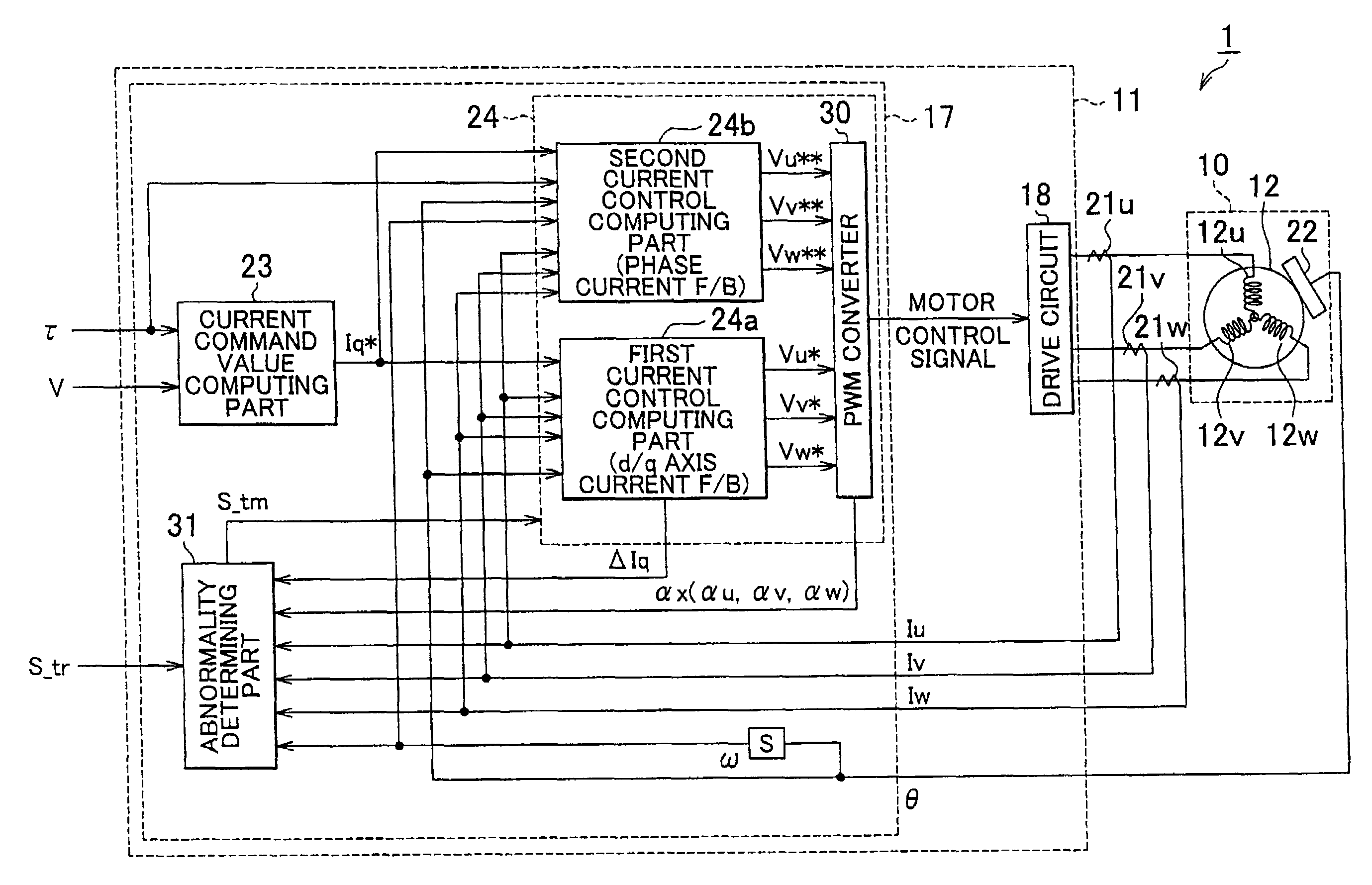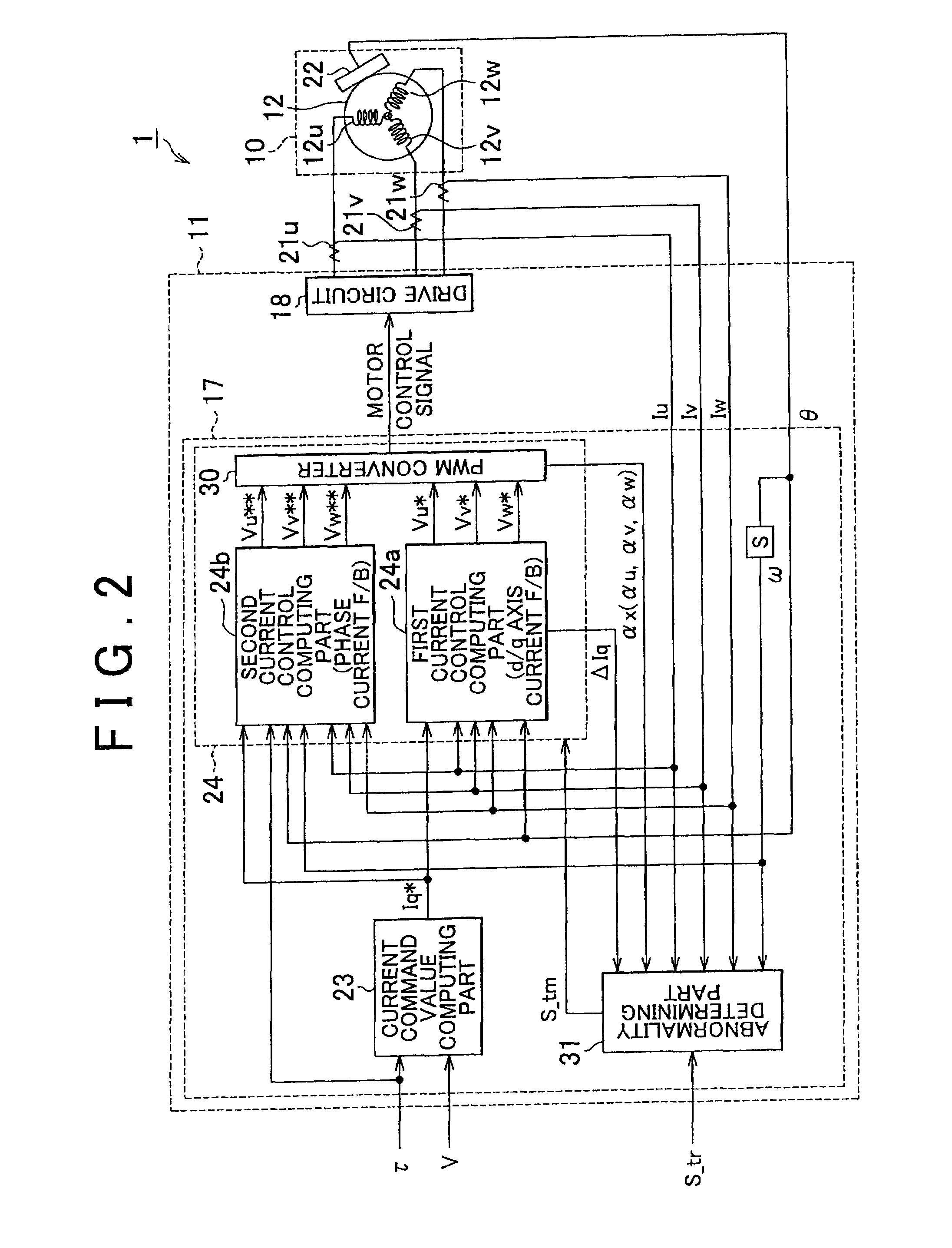Electric power steering device
a technology of electric power steering and steering shaft, which is applied in the direction of steering initiation, instruments, special purpose vessels, etc., can solve the problems of significant change in the assist power of the motor, significant change in the steering characteristics of the eps, and inevitably deterioration of the steering feeling, so as to improve the steering feeling, reduce the oscillation, and smooth the effect of the motor rotation
- Summary
- Abstract
- Description
- Claims
- Application Information
AI Technical Summary
Benefits of technology
Problems solved by technology
Method used
Image
Examples
first embodiment
[0053]An electric power steering device (EPS) according to the invention is described hereinafter with reference to the drawings.
[0054]FIG. 1 is a schematic configuration diagram of an EPS 1 according to the first embodiment. As shown in the diagram, a steering shaft 3 connected to a steering wheel (steering) 2 is connected to a rack 5 via a rack-and-pinion mechanism 4. When a steering operation is performed, the rotation of the steering shaft 3 is converted into a linear motion of the rack 5 by the rack-and-pinion mechanism 4. Then, the linear motion of the rack 5 changes the steering angle of a turning wheel 6.
[0055]The EPS 1 has an EPS actuator 10 which functions as a steering force assisting device for applying an assist power to a steering system to assist its steering operation, and an electrical control unit (ECU) 11, which serves as the control means, for controlling actuation of the EPS actuator 10.
[0056]The EPS actuator 10 of this embodiment is a so-called rack-type EPS ac...
second embodiment
[0168]An electric power steering system is described hereinafter with reference to the drawings.
[0169]A major difference between this embodiment and the above-described first embodiment exists in the mode of the rotational angle correction control during two phase drive. Therefore, for convenience of explanation, the same reference numerals are used for the parts the same as those of the first embodiment, and the explanation of these parts are omitted.
[0170]As shown in FIG. 20, a rotational angle correction controller 50 of this embodiment is provided with an inverse assist correction amount computing part 51 instead of the first and second correction amount computing parts 41 and 42 (see FIG. 9) in the rotational angle correction controller 40 of the first embodiment.
[0171]In this embodiment, the inverse assist correction amount computing part 51 receives the steering torque τ, and the rotational angle θ and the rotational angular velocity ω of the motor 12. The inverse assist cor...
PUM
 Login to View More
Login to View More Abstract
Description
Claims
Application Information
 Login to View More
Login to View More - R&D
- Intellectual Property
- Life Sciences
- Materials
- Tech Scout
- Unparalleled Data Quality
- Higher Quality Content
- 60% Fewer Hallucinations
Browse by: Latest US Patents, China's latest patents, Technical Efficacy Thesaurus, Application Domain, Technology Topic, Popular Technical Reports.
© 2025 PatSnap. All rights reserved.Legal|Privacy policy|Modern Slavery Act Transparency Statement|Sitemap|About US| Contact US: help@patsnap.com



